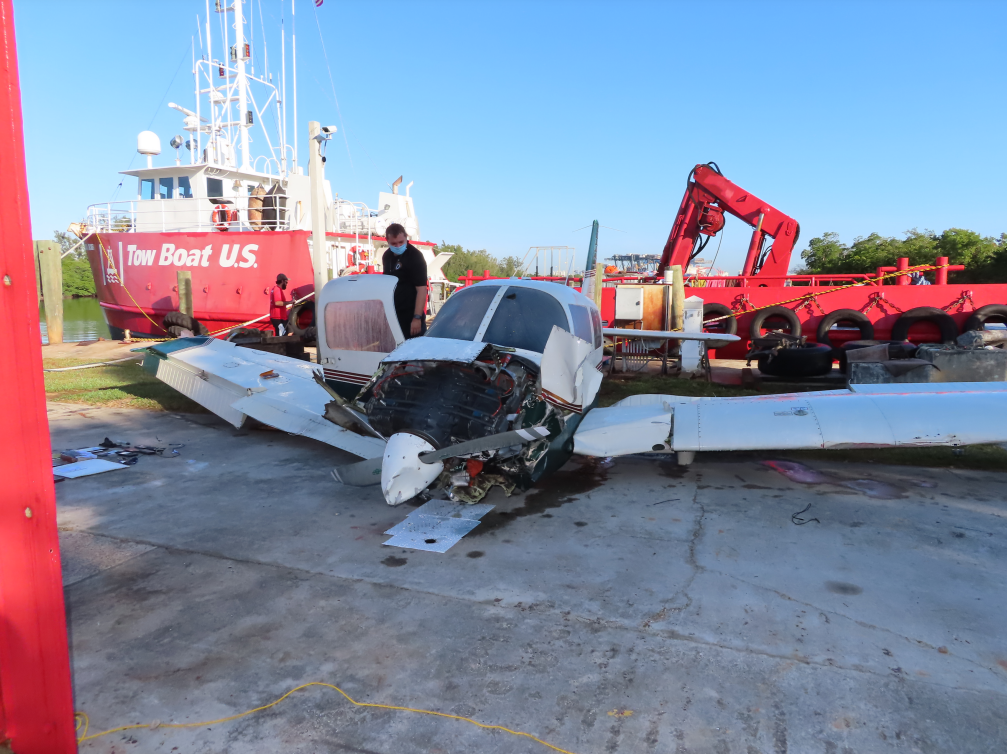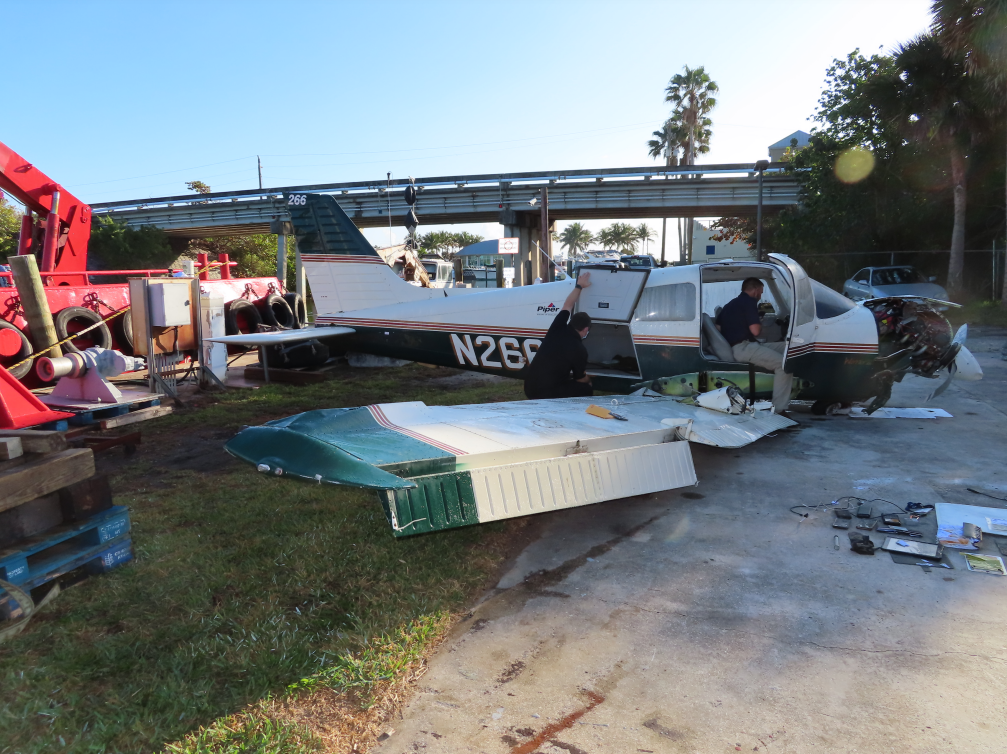
ASN Wikibase Occurrence # 247049
This information is added by users of ASN. Neither ASN nor the Flight Safety Foundation are responsible for the completeness or correctness of this information.
If you feel this information is incomplete or incorrect, you can submit corrected information.
| Date: | Sunday 24 January 2021 |
| Time: | 20:00 |
| Type: |  Piper PA-28-161 Warrior III |
| Owner/operator: | Euro 2000 Inc |
| Registration: | N266ND |
| MSN: | 2842066 |
| Year of manufacture: | 2000 |
| Total airframe hrs: | 16366 hours |
| Engine model: | Lycoming O-320-DG3 |
| Fatalities: | Fatalities: 1 / Occupants: 1 |
| Aircraft damage: | Substantial |
| Category: | Accident |
| Location: | Atlantic Ocean near Boynton Beach, FL -
 United States of America United States of America
|
| Phase: | En route |
| Nature: | Private |
| Departure airport: | Palm Beach-Palm Beach County Airport, FL (LNA/KLNA) |
| Cocoa-Merritt Island Airport, FL (COI/KCOI) | |
| Investigating agency: | NTSB |
| Confidence Rating: |
On January 24, 2021, about 2000 eastern standard time, a Piper PA-28-161, N266ND, was substantially damaged when it was involved in an accident near Boynton Beach, Florida. The private pilot was fatally injured. The airplane was operated as a Title 14 Code of Federal Regulations Part 91 personal flight.
While in cruise flight about 1,000 ft on a southbound heading over land in night visual meteorological conditions, the pilot requested flight following services and routing to the north “along the shoreline.” Air traffic control approved the request, issued the altimeter setting, and instructed the pilot to proceed offshore and “follow the shoreline northbound at or below 500 feet.” The pilot acknowledged the instructions and repeated the altimeter setting as the airplane began a descending left turn to the east. The target identified as the accident airplane continued an eastbound descent on a heading about perpendicular to the shoreline when the controller assigned the airplane a new transponder code. When the pilot acknowledged the transponder code instructions, the airplane was at 300 ft and descending and displayed a transponder code one digit off that which was assigned. At that time, the airplane was crossing the beach at 225 ft and descending. Once over water, the airplane’s track depicted a shallow, descending left turn. Soon after, radar contact was lost and there were no further communications with the airplane.
Onboard video revealed that the descent was initiated by multiple reductions in engine rpm as the airplane turned to the east, consistent with the controller’s instructions to fly offshore and continue north below 500 ft; however, no sounds consistent with an increase in engine rpm to arrest the descent occurred after the airplane began tracking toward the ocean, nor in the final moments of flight as the airplane initiated a turn toward the north well below 500 ft.
Given the dark nighttime conditions, the pilot’s lack of instrument experience likely focused his attention outside the aircraft. In a low-wing airplane, cultural/ambient lighting on the ground ahead of the airplane would have provided some cues of both altitude and attitude; however, the availability of those cues would have rapidly decreased as the airplane neared the shoreline. The circumstances of this accident suggest that the pilot over-relied on outside references and did not effectively reference the altimeter. The controller’s instructions to reset the transponder code about the same time the airplane was descending through 500 ft, although routine, likely served as an operational distraction to a pilot with his limited experience. His efforts to reset the transponder likely further diverted his attention away from the altimeter, and the pilot allowed the airplane to descend into the water.
Probable Cause: The pilot’s controlled flight into the ocean at night due to his unrecognized spatial disorientation. Contributing to the accident was the pilot’s distraction with the tuning of his transponder while maneuvering over an area with reduced visual references.
Accident investigation:
 |
|
Sources:
https://www.local10.com/news/local/2021/01/25/reports-small-plane-crashes-in-boynton-beach-coast-guard-searching-ocean/
https://www.nbcmiami.com/news/local/small-plane-crash-reported-in-boynton-beach/2368002/
https://www.kirhttps://flightaware.com/live/flight/N266ND/history/20210125/0122Z/KLNA/L%2026.53853%20-80.041
NTSB
https://registry.faa.gov/aircraftinquiry/Search/NNumberResult?nNumberTxt=N266ND
https://flightaware.com/live/flight/N266ND
https://www.jetphotos.com/photo/9367995 (photo)
Location
Images:


Photos: NTSB
Revision history:
| Date/time | Contributor | Updates |
|---|---|---|
| 25-Jan-2021 04:23 | Geno | Added |
| 25-Jan-2021 04:25 | Geno | Updated [Source] |
| 25-Jan-2021 04:33 | Geno | Updated [Time, Aircraft type, Registration, Cn, Operator, Source] |
| 25-Jan-2021 07:23 | RobertMB | Updated [Time, Other fatalities, Location, Phase, Nature, Departure airport, Destination airport, Source, Damage, Narrative] |
| 25-Jan-2021 07:29 | RobertMB | Updated [Location, Source, Narrative] |
| 25-Jan-2021 13:40 | Captain Adam | Updated [Registration, Total fatalities, Total occupants, Location, Source, Narrative] |
| 06-Feb-2021 18:49 | Aerossurance | Updated [Source, Narrative] |
Corrections or additions? ... Edit this accident description
The Aviation Safety Network is an exclusive service provided by:


 ©2024 Flight Safety Foundation
©2024 Flight Safety Foundation